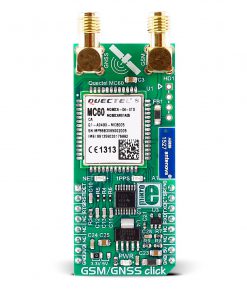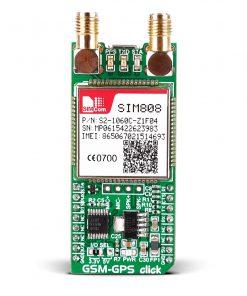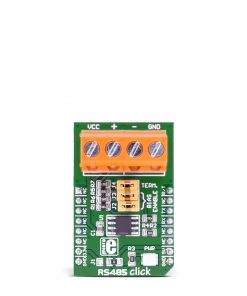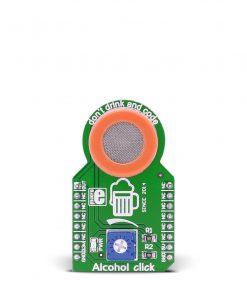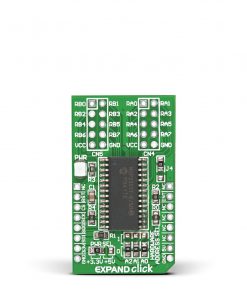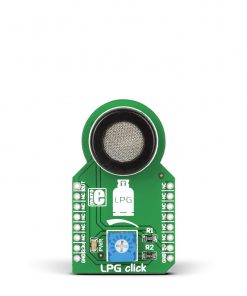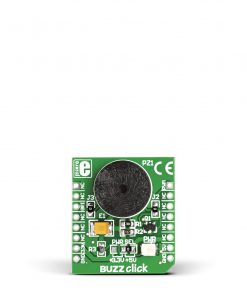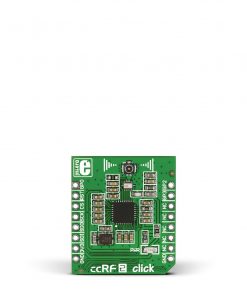Hall Current 15 Click
R720.00 ex. VAT
Hall Current 15 Click is a compact add-on board that provides precise AC or DC current-sensing solution. This board features the TMCS1101-Q1, a galvanically isolated Hall-effect current sensor capable of DC or AC current measurement with high accuracy, excellent linearity, and temperature stability from Texas Instruments. A low-drift, temperature-compensated signal chain provides <1.5% full-scale error across a broad operating temperature range. It also provides a reliable 600V lifetime working voltage and 3kVRMS isolation between the current path and circuitry with uni/bidirectional current sensing. Besides, the user is allowed to process the output signal in analog or digital form. This Click board™ is suitable for AC or DC current-sensing in industrial and commercial systems, motor and load control, power factor correction, overcurrent protection, and more.
Hall Current 15 Click is supported by a mikroSDK compliant library, which includes functions that simplify software development. This Click board™ comes as a fully tested product, ready to be used on a system equipped with the mikroBUS™ socket.
Stock: Lead-time applicable.
| 5+ | R684.00 |
| 10+ | R648.00 |
| 15+ | R612.00 |
| 20+ | R588.96 |

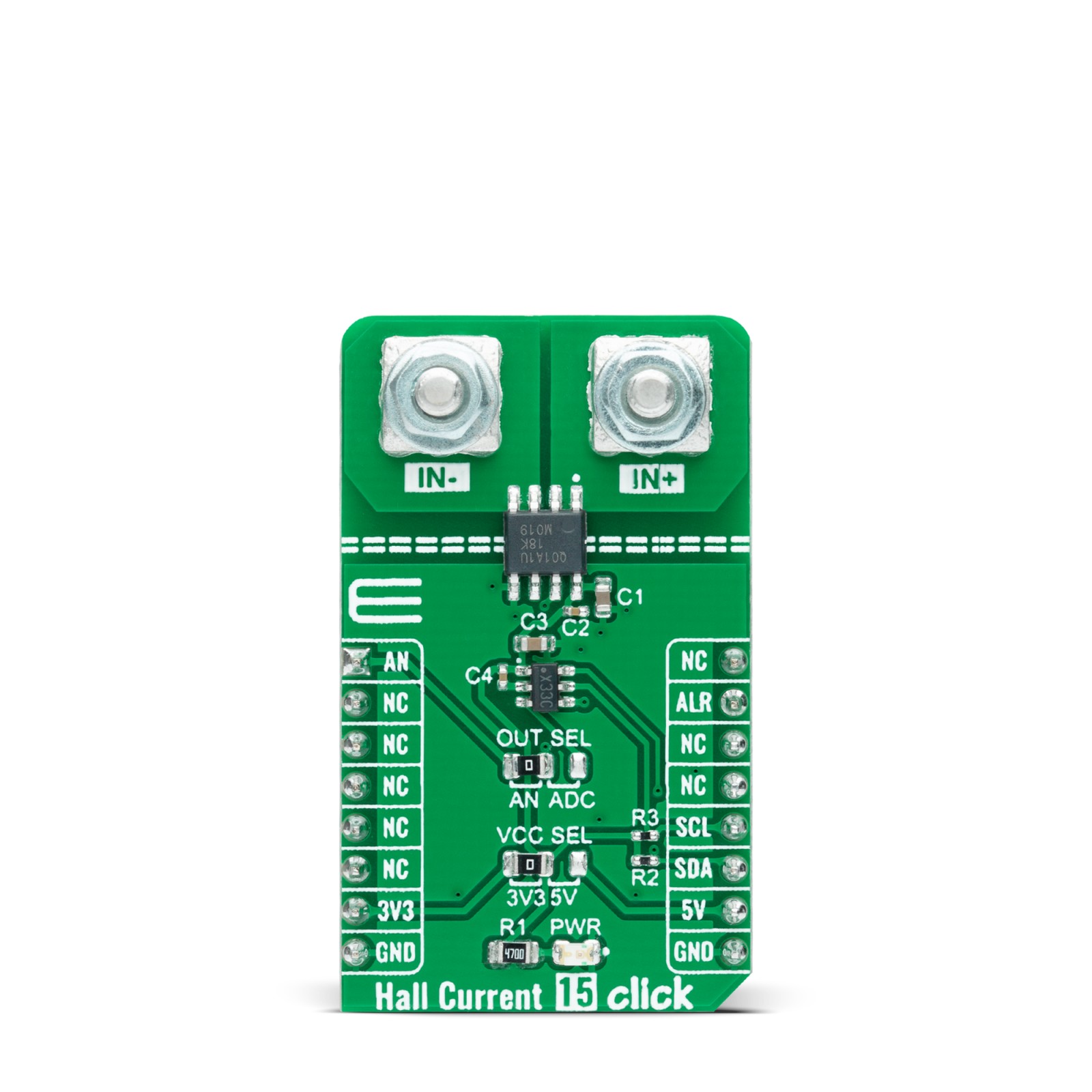
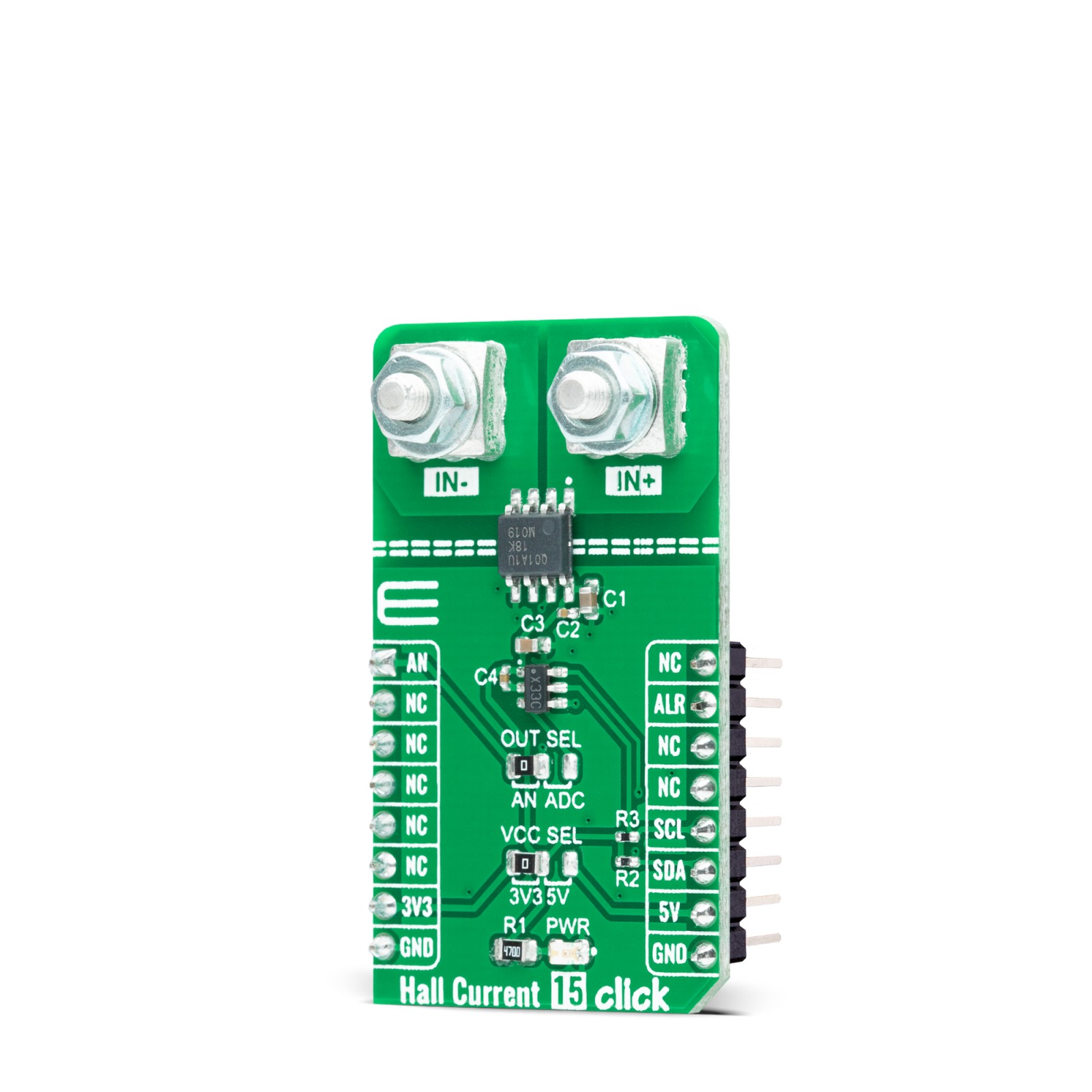
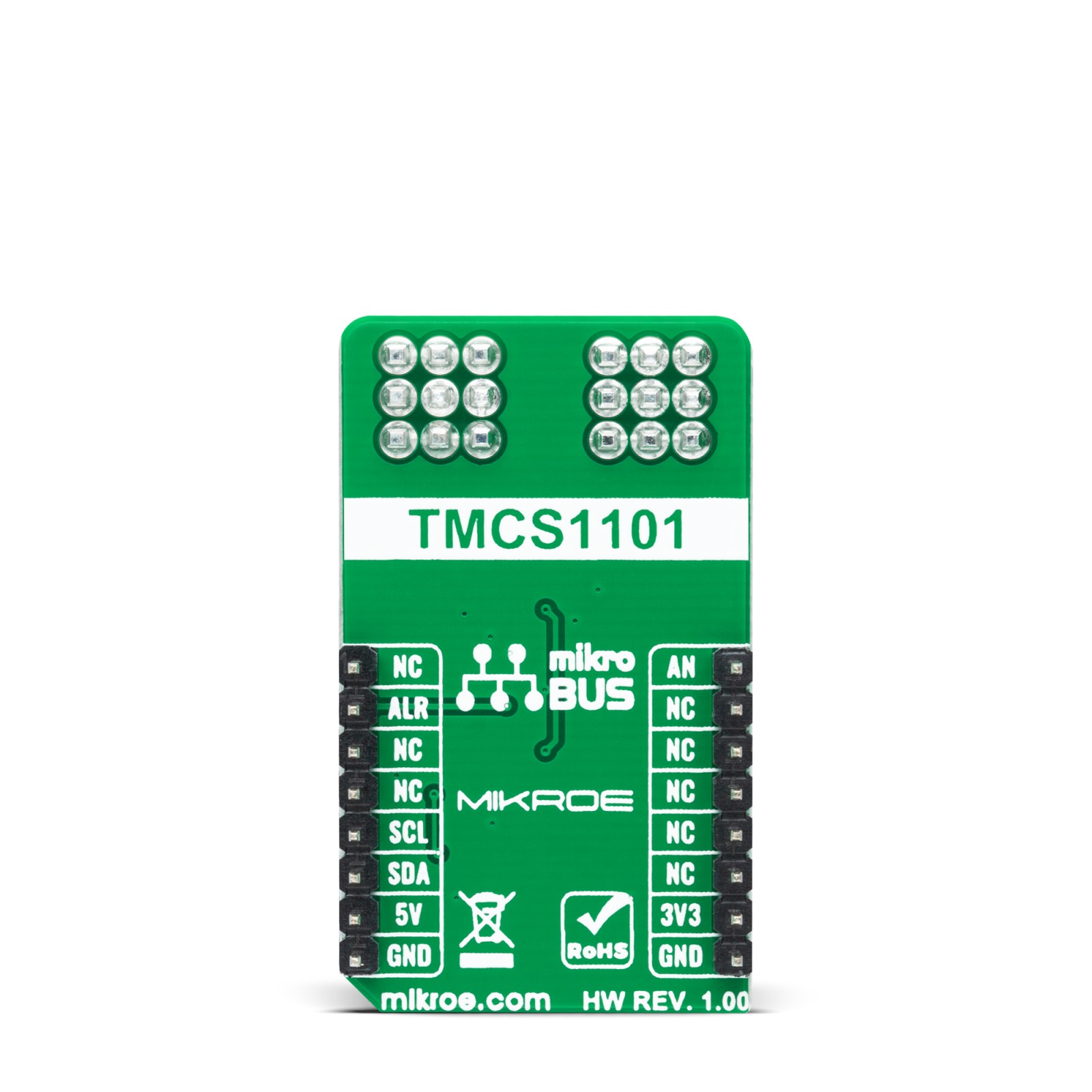
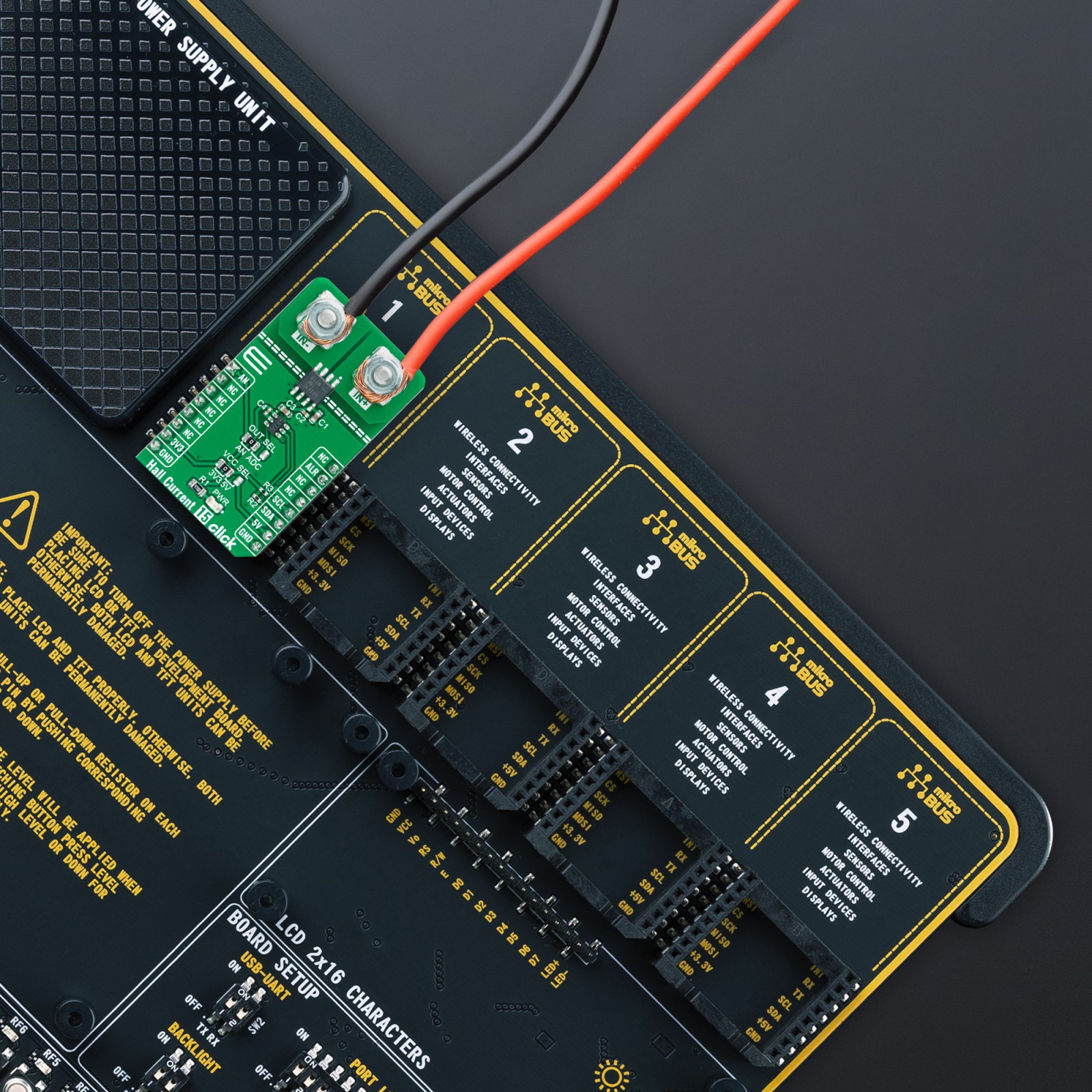
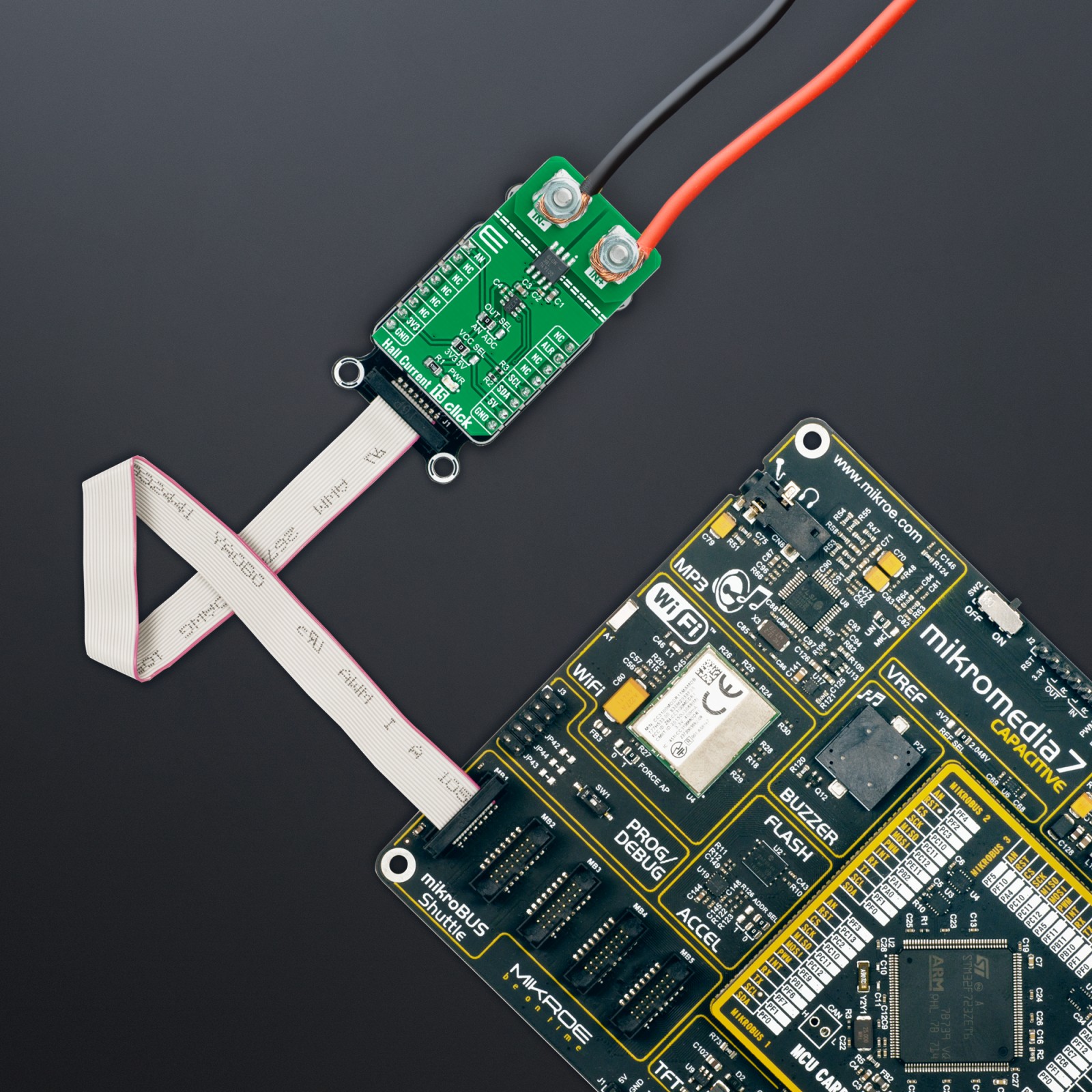
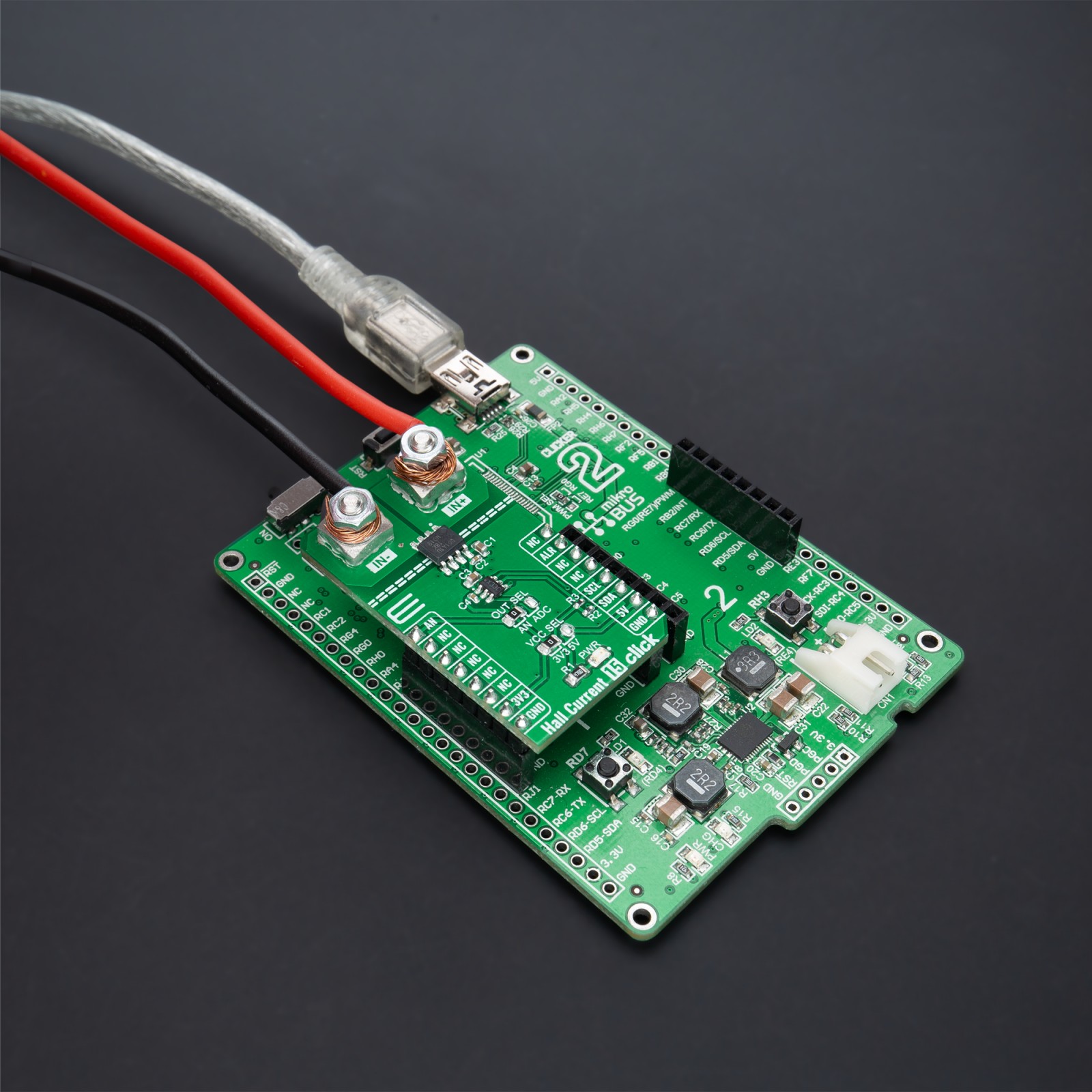
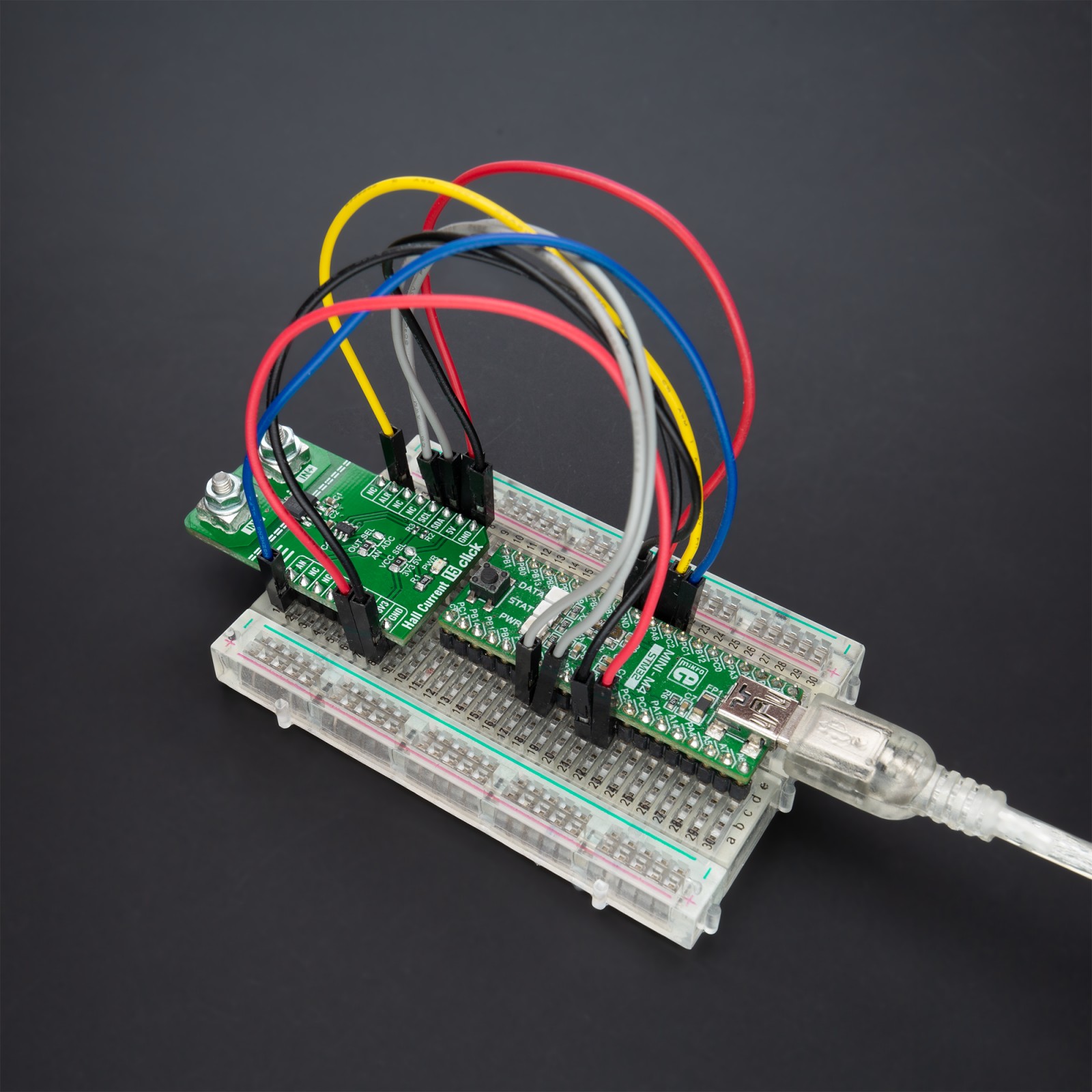
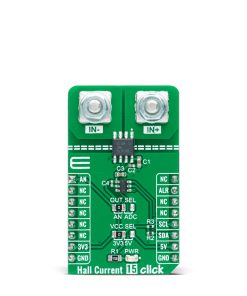
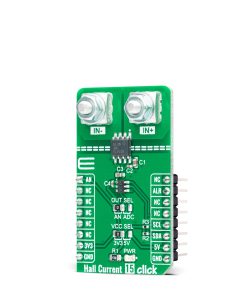
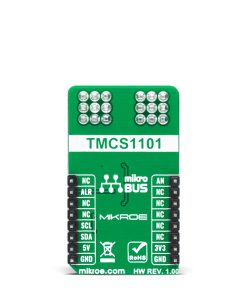
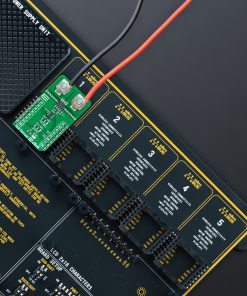
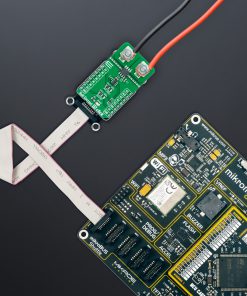
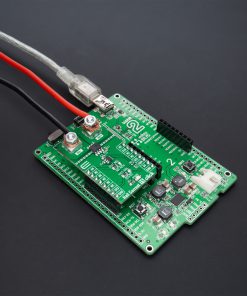
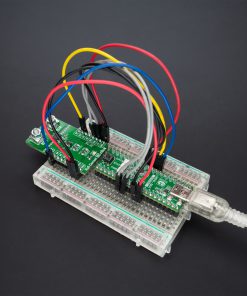
 DO NOT TOUCH THE BOARD WHILE THE LOAD IS CONNECTED!
DO NOT TOUCH THE BOARD WHILE THE LOAD IS CONNECTED!

